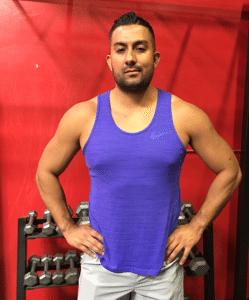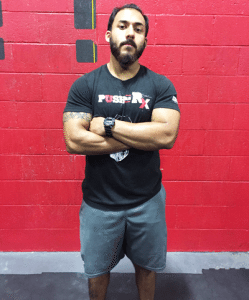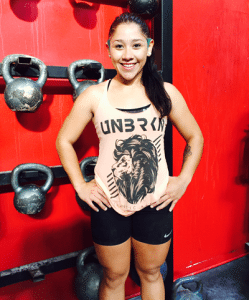
Design Your Own HIIT Workout With This Perfect Formula
Science and experts alike say high-intensity interval workouts reign as fitness royalty. Touted as a top-notch method for weight loss, improving your VO2 max and even helping you run faster, it�s no wonder this approach to exercise holds such high wellness honors.
Of course, just like any workout you do over and over, the routine can get stale. That is, until you learn the foundation of HIIT workouts and then switch it up every time you go to break a sweat. Allow trainer Adam Rosante, creator of Two Week Transformation and author of Super Smoothie Revolution, to break down the basics so you can turn up the benefits.
RELATED: No Time? This is How Much HIIT You Really Need
HIIT Workout: What You Need to Make It Work
�The foundation [of HIIT] is a series of intervals of intense activity, coupled with intervals of less-intense activity or complete rest,� says Rosante. �Beyond buzz, it�s popularity can largely be attributed to its efficiency. HIIT�s a great way to get fit in a short amount of time. But the key is to ensure that the high-intensity intervals are truly performed at your highest intensity.�
How do you know if you�re HIIT-ing it hard enough? Rosante says to go at 80 to 95 percent of your maximum heart rate during the work intervals, and 60 to 65 percent during your rest periods. (To find your max heart rate, just subtract your age from 220. Then take the percentages from there.) If you don�t have a heart rate monitor, push hard enough through the work intervals that you�re sucking wind. You shouldn�t be able to hold a convo, Rosante says.
You can do a HIIT workout with almost any exercise, from plank hip dips to jumping jacks to everyone�s favorite: burpees. That�s because it�s more about intensity than the specific movements, Rosante explains. But to help you narrow down what to do, Rosante says he prefers a mix of moves that force the glutes, quads and hamstrings (the body�s biggest muscles) to work explosively. Some of his go-to�s include jump squats, plyo lunges and sprints.
But don�t stop there. Rosante often alternates between a lower body and upper body move, or a lower body and total body exercise. �The alternation forces your heart to pump blood out to the muscles in a much higher volume, which, naturally, means your heart rate is significantly elevated,� Rosante explains. �When you boost your heart rate like this, you disrupt your metabolic pathways in such a way that they�re scrambling to return to normal long after the workout has ended.� This concept of burning calories even after you stop busting a move � known as excess post-exercise oxygen consumption or EPOC � will blast fat and calories, fast.
RELATED: How to Beast Box Jumps and Other Plyometric Exercises
Choose Your Own HIIT Workout Adventure
Spike your heart rate, tone your body and break through plateaus with this HIIT formula from Rosante. Start with a goal intensity, then pick an option from each layer. No two workouts have to be the same � but you�ll get sweaty and fit with each round. We�ll call this one smash HIIT.
Infographic: Mallory Creveling / Life by Daily Burn
To warm up before you dive in, do a series of dynamic stretches and a few high jumps. After you HIIT it, cool down with a solid stretch of all major muscle groups. Rosante suggests holding each one for at least 3 to 5 deep breathes.
Standing Mountain Climbers
Start standing, arms bent at your chest, palms facing away from your body. Drive your right knee up toward your chest as you straighten your left arm toward the ceiling. Quickly switch to bring your left knee toward your chest and right hand toward the ceiling. Continue alternating.
RELATED: 15 Most Underrated Exercises, According to Trainers
Push-Ups
Start in a high plank position. Without piking or dropping your hips, bend your elbows and lower your chest to the ground. Then push back up to a plank.
Speed Squats
Start with feet a little wider than hip-distance apart, toes pointed slightly outward. Drive your hips back and butt toward the ground to perform a low squat. Jump back up and bring your feet together. Then jump back into a wide squat position.
4-Point Plankers
Start in a high plank position with feet together. Jump your feet to the left side of your left hand, then hop them back to the plank position. Next, jump your feet to the right side of your right hand, then back to the plank position. Hop your feet between your hands, then back to the plank position. Finally, jump your feet wide, placing one on either side of your hands. Then return to the plank position. Continue jumping to each point, keeping your hands on the ground the whole time.
RELATED: 3 Plyometric Planks You Need to Try ASAP
Burpees
Start standing. Place your hands on the ground, wrists underneath shoulders and jump your feet back to high plank position. Drop your chest to the ground. Then, without arching your back, push yourself back up and jump your feet back up to your hands. Explode off the ground to perform a hop at the top.
High Plank Punches
Start in a high plank position. Keeping your hips still, punch your right arm out straight in front of you. Then your left. Continue alternating.
RELATED: 3 Fat-Blasting HIIT Workouts to Try Now
Sprints
Run in place (or on a treadmill or track) as fast as you can, pumping your arms for more power.
Y-W-T Holds
Lie on your stomach, arms straight out in front of you. Lift your legs and arms off the ground, with your arms to a Y position. Hold for a few seconds, then lower back down. Lift your legs and arms off the ground again. This time pull your elbows back and shoulder blades together so your arms form a W. Hold for a few seconds then extend your arms again and lower back down. Lift your legs and arms off the ground another time, this time moving your arms into a T position with elbows straight and arms out to the sides. Lower back down and repeat from the Y.





















